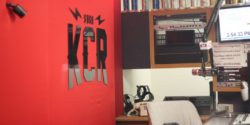During my full day of radio station tours in the San Diego area in June, 2019, I visited college radio station KCR at San Diego State University. On a sprawling campus with a student population of more than 36,000, the station was a bit tricky to find. After a few missed turns, I parked atop an 8-floor garage and made my way the KCR studio in the school’s Communication building.
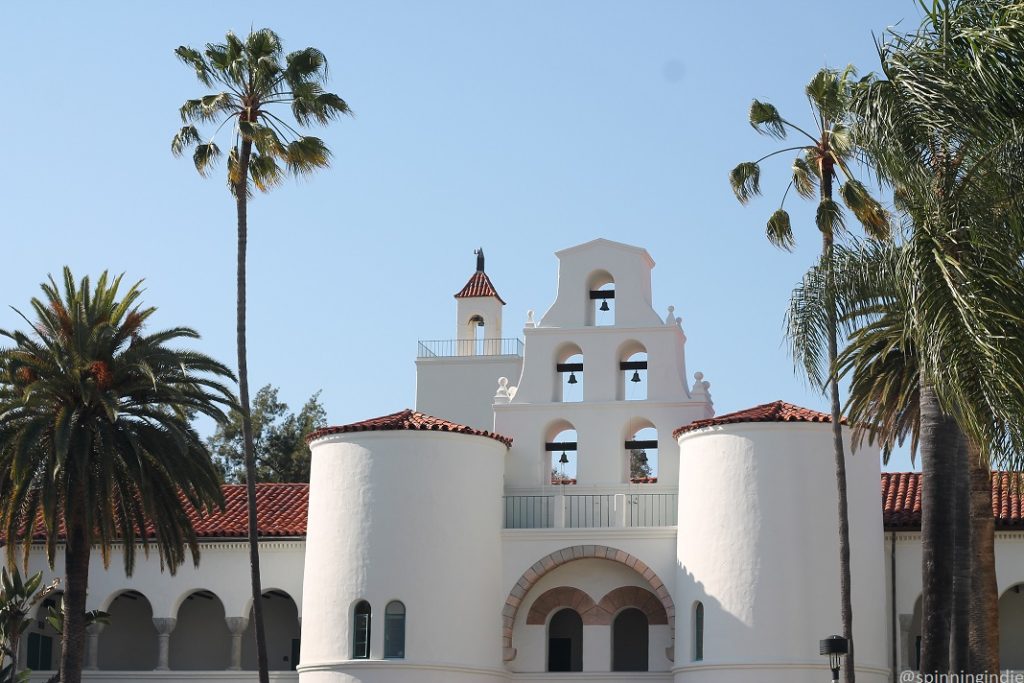
KCR’s General Manager Ahmad Dixon greeted me, giving me the grand tour of the main KCR studio and also led me on a quick jaunt to see a satellite building that serves as a production studio and social hub for the station.
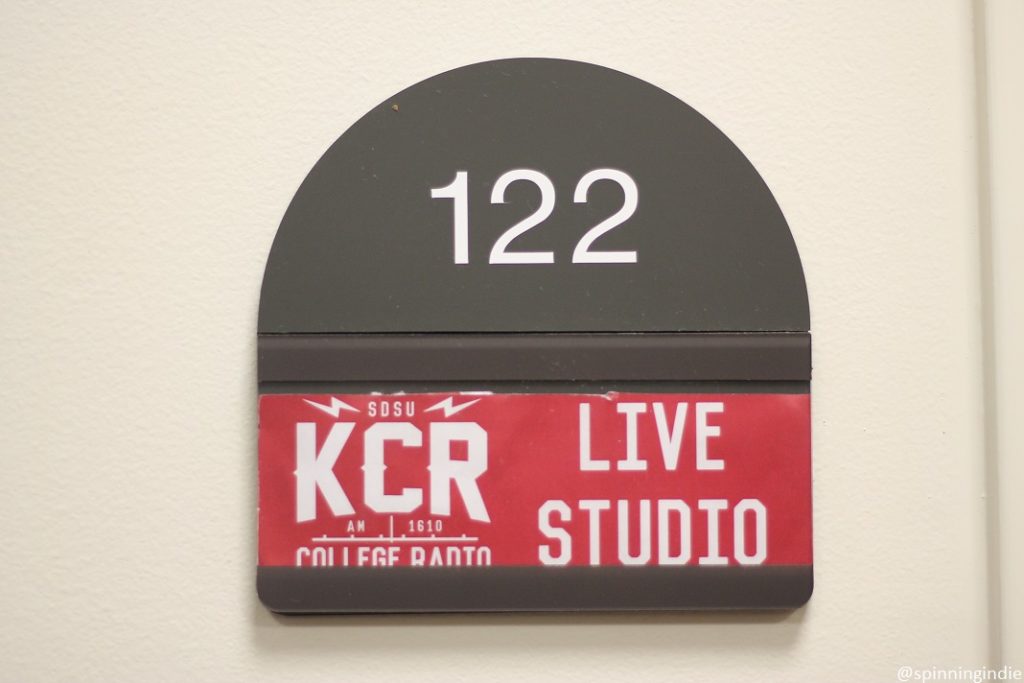
Dating back to 1969, KCR is in the midst of its 50th anniversary celebrations this year. KCR has never had an FCC-licensed over-the-air terrestrial signal; but it does have a very interesting, interrelated relationship with a long-time public radio station on campus.
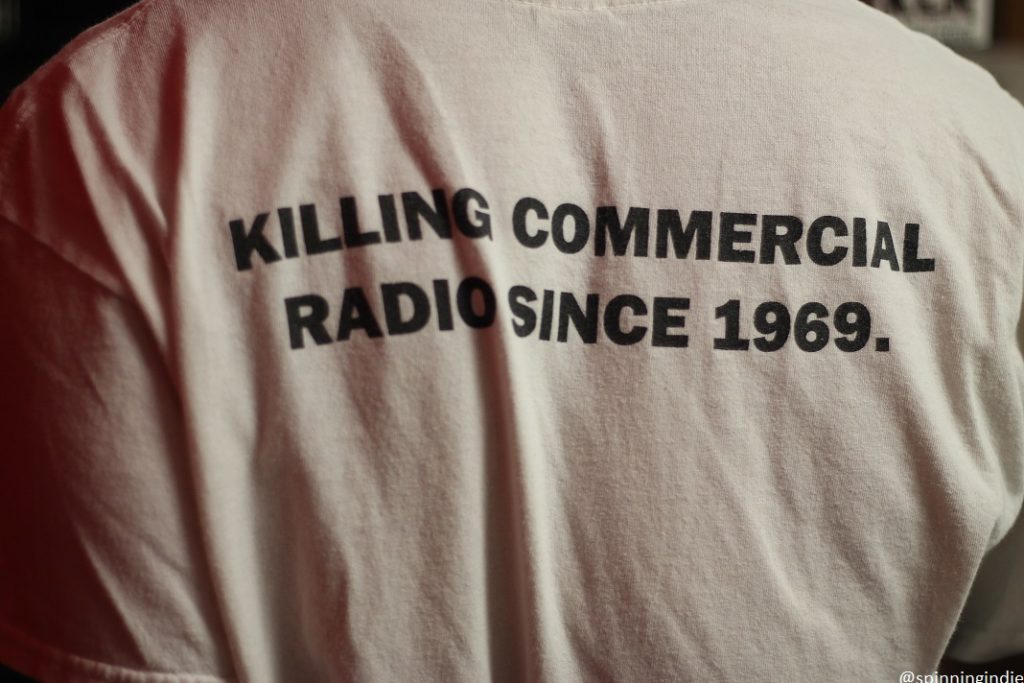
Radio activity began in 1960 at the then-named San Diego State College, when educational radio station KEBS launched as part of the school’s speech department. A 2009 obituary for founder Ken Jones, recounts that,
Jones was the brain behind KEBS-FM (Educational Broadcasting in San Diego) which later became KPBS. It was the first radio station licensed to a California State University campus. In the mid-1950s, as a speech communications professor at San Diego State College (now SDSU), Jones began his work toward starting an educational radio station on campus. KEBS began broadcasting on Sept. 12, 1960 from the Speech Arts Building. The original schedule was only two-and-a-half hours, five days a week.”
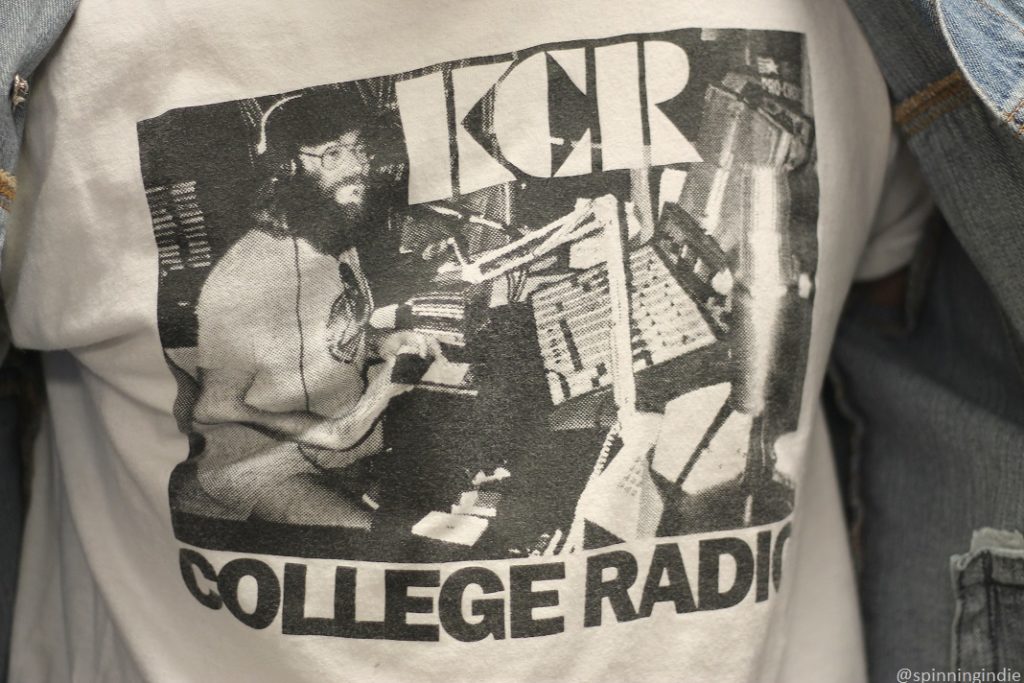
Although students were involved in educational radio station KEBS, it was not a student envisioned or student-led program, which ultimately prompted the eventual founding of student radio station KCR. On the KCR Alumni website, Jerry Zullo shares the story of how KCR came to be:
The story starts in 1966. At that time, Radio-TV majors (later called Telecommunications & Film) were required to complete a Senior Project in order to graduate. A student named Martin Gienke decided to do a feasibility study, complete with recommendations, on setting up a student radio station at San Diego State…
At that time, KEBS-FM (later KPBS-FM) was considered a ‘student station;’ that is, it was operated by students who were forced to work there as part of their Radio-TV curriculum. KEBS broadcast with 780 watts with an antenna on the roof of the Speech Arts Building. We were on the air Monday through Friday from 4:00 p.m. to 11:00 p.m., playing classical music and boring taped ‘educational’ programs. Hardly anybody’s real idea of a student station.
Martin roped me into the project. He’d do the study, and then my Senior Project would be to get the station on the air. The ideal solution would have been to take over KEBS and turn it into a real student station, but after discussion with faculty we knew that wasn’t going to happen.”
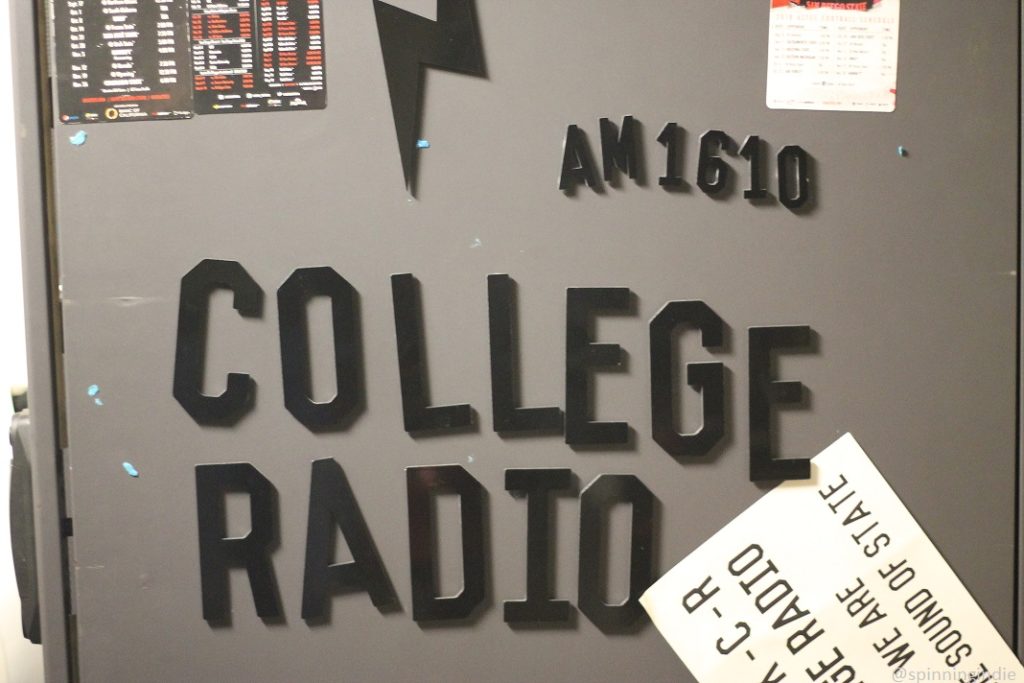
I was especially intrigued to read that in the 1960s, Martin Gienke and Jerry Zullo embarked on tours of “every college radio station in California.” Zullo explains:
We did interviews, found out what worked, what didn’t work, how the stations were set up, formats, funding, pitfalls to be careful of, etc. In the end, we ended up with a report about three inches thick. The final recommendation was to make San Diego State’s student station a carrier current station, using electrical wiring in the buildings to carry the signal.”
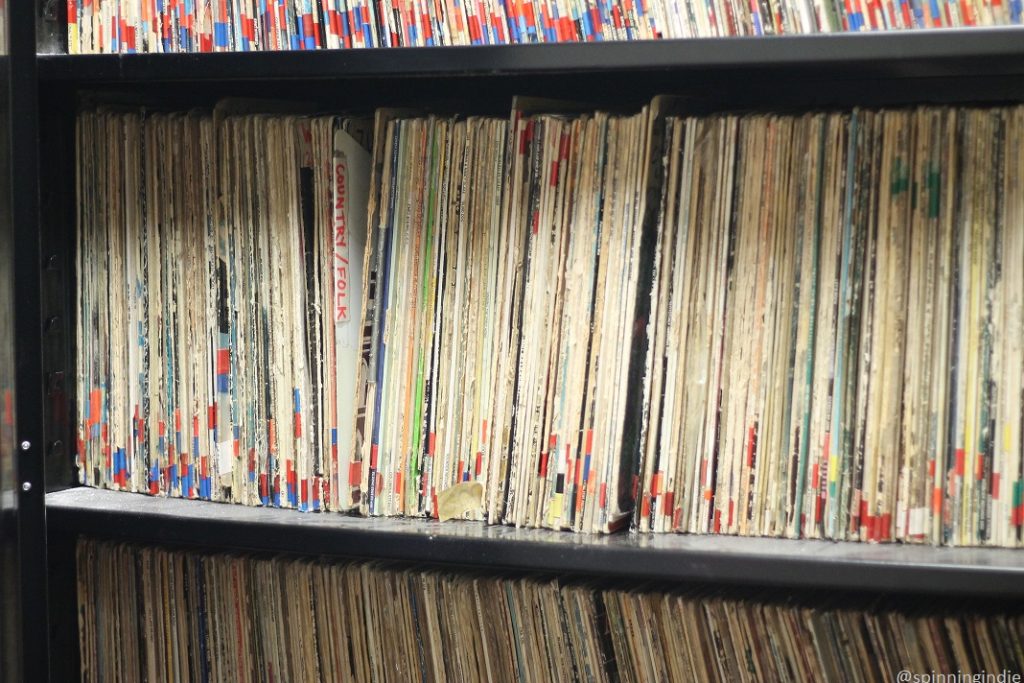
A few years later, in 1969, the dreams of a student-run carrier current station were realized, with transmitters in dorms all over campus and the AM broadcasts even leaking into the nearby community. Zullo writes,
We started engineering tests and found that not only did we cover all the dorms, but the signal sort of leaked (kind of on purpose) and we covered the entire campus. In fact, if you were driving, you could listen to KCR on Interstate 8 between San Diego Stadium and College Avenue. On Montezuma Road and over to El Cajon Boulevard, you could hear the station from about 54th Street to 63rd Street.”
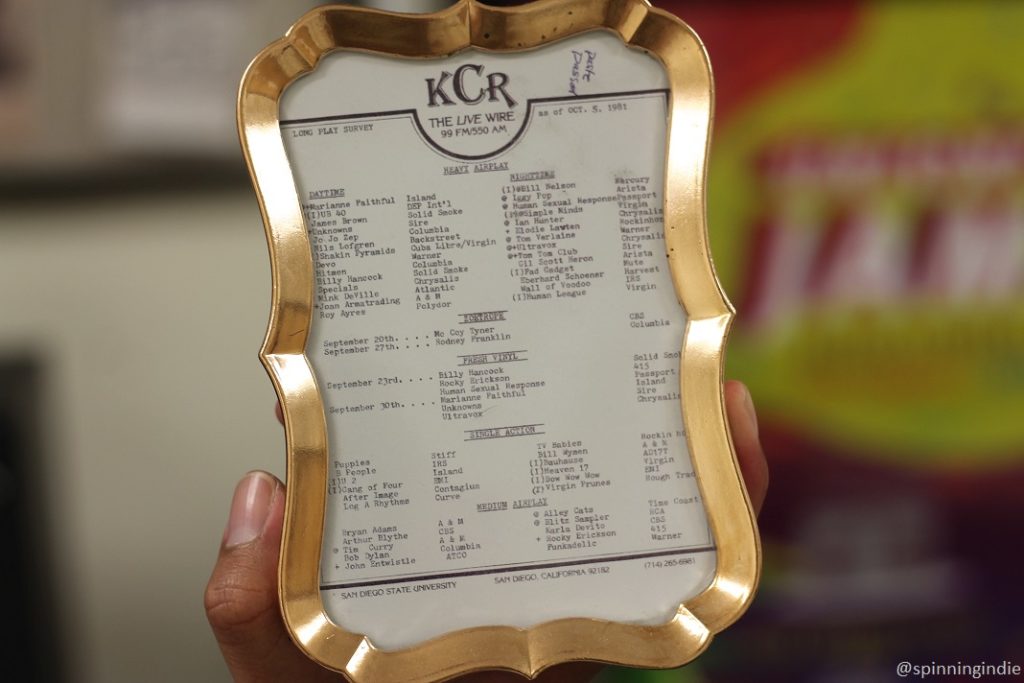
Meanwhile, educational radio station KEBS-FM transitioned to a public radio station and was one of the charter members of NPR, even changing its call letters to KPBS in 1970.
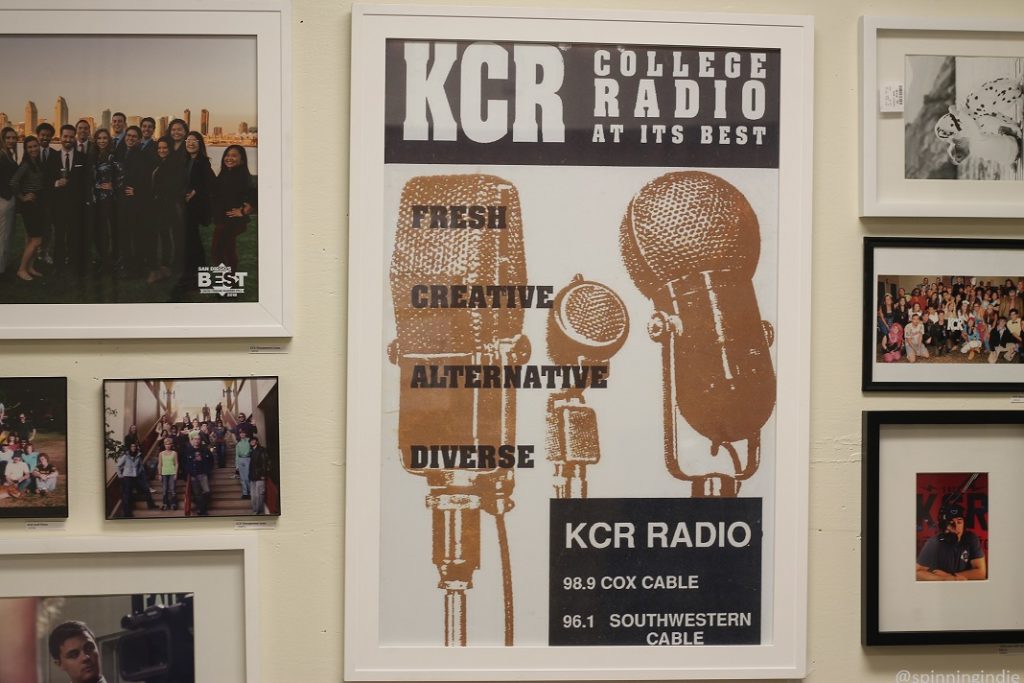
Today, KCR still has an AM signal, broadcasting at 1610 AM for about a mile around campus (the AM location has changed over the years) and can also be heard on Cox Cable. Most listeners tune in to the station’s internet stream, however. Additionally, KCR has a strong video presence, with web cameras in the studio and a thriving YouTube channel.
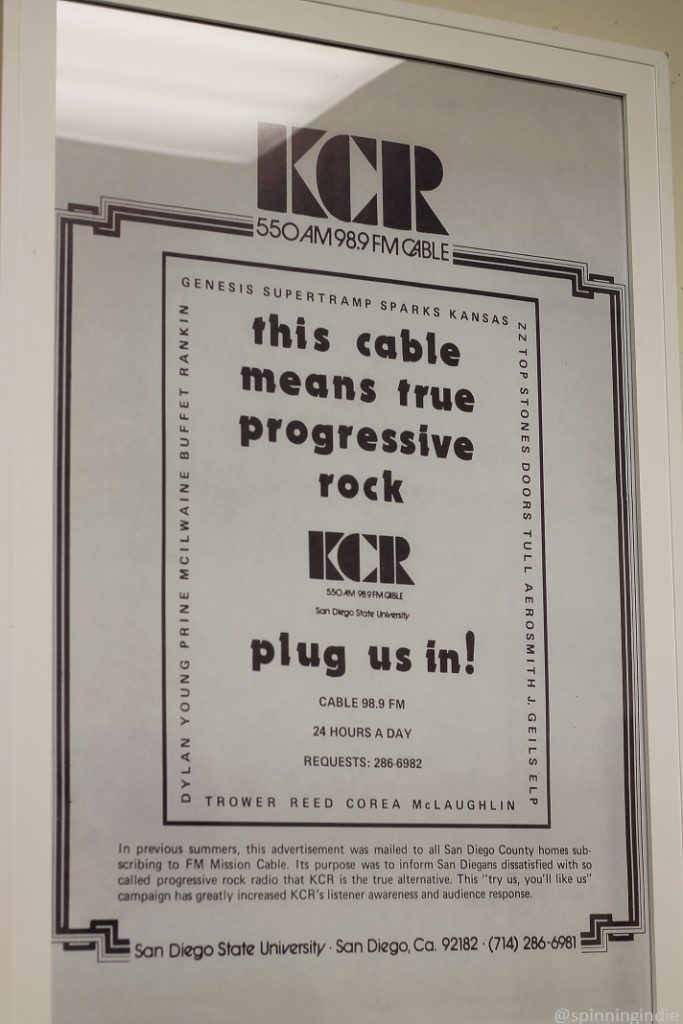
I began my tour in KCR’s on-air studio in the Communication building. General Manager Ahmad Dixon pointed out various highlights, including the brand new, bright red fabric soundproofing material lining the walls. The station was DJ-less during the visit and “QC” (aka quality control) was playing in place of a live human. Curated by the music director, QC is the name for the mix of music, including indie and local material, that runs on automation.
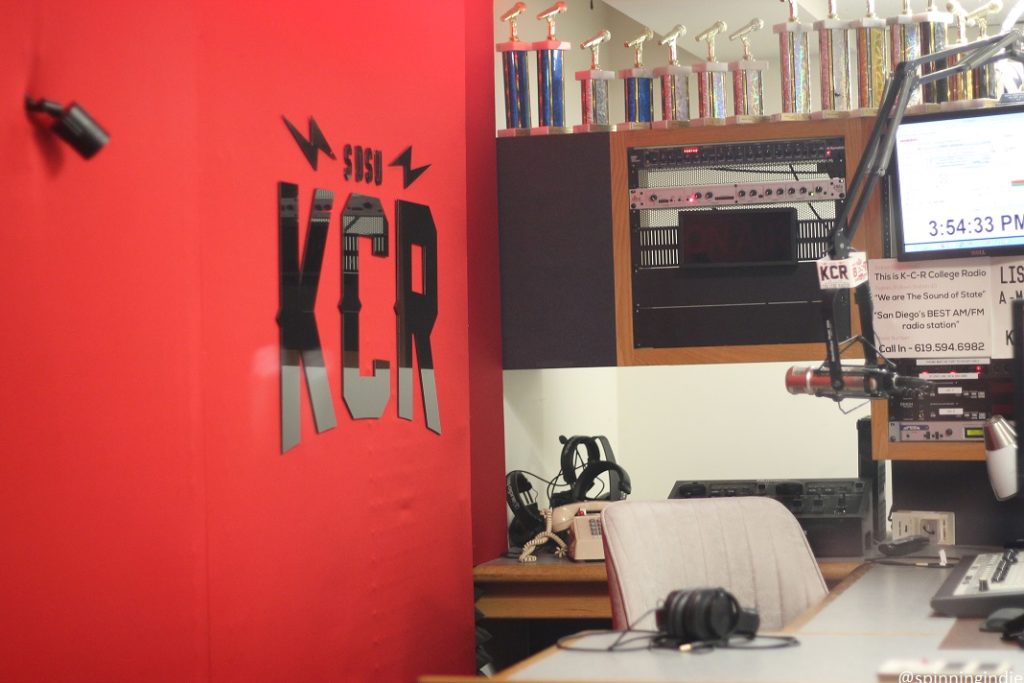
Student-run live shows at KCR are “totally freeform,” according to Dixon. While DJs have creative license to play what they’d like from the station’s library or from their own collections, they are encouraged to play “odd, esoteric, non-mainstream” material, Dixon explained. The station also airs a mix of talk shows and sports programming (with a “hyperfocus” on San Diego State sports).
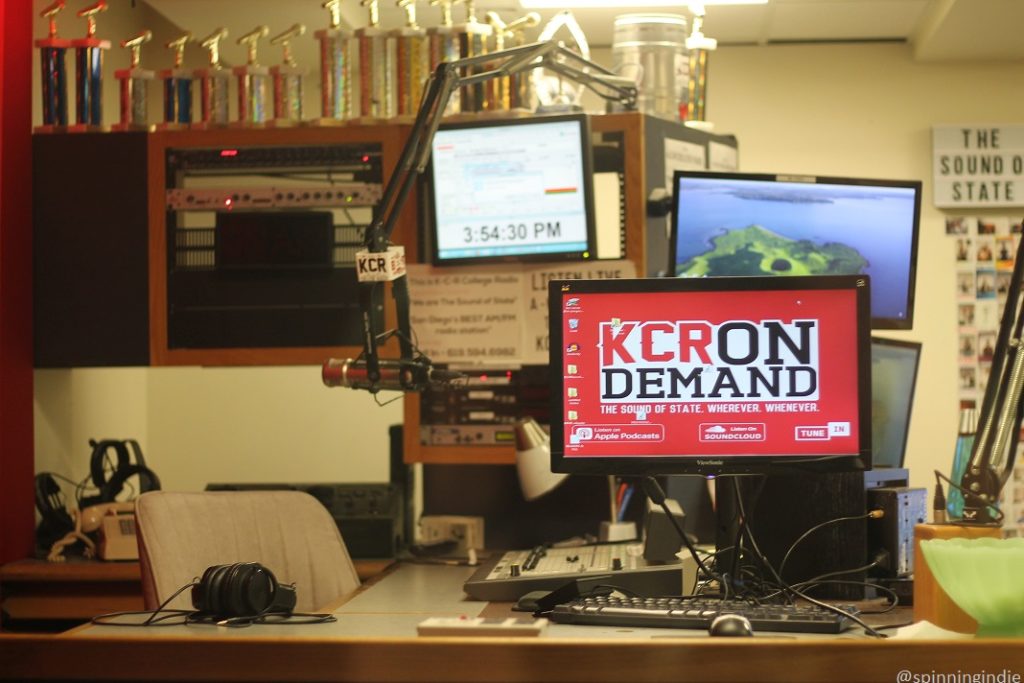
A talk show fanatic, Dixon joined KCR as a freshman (he’s a senior in Fall 2019) and relished the opportunities to experiment on the air. He reminisced a bit, telling me that he’d spun Kids Bop records, played vinyl backwards, and improvised a song while on-air.
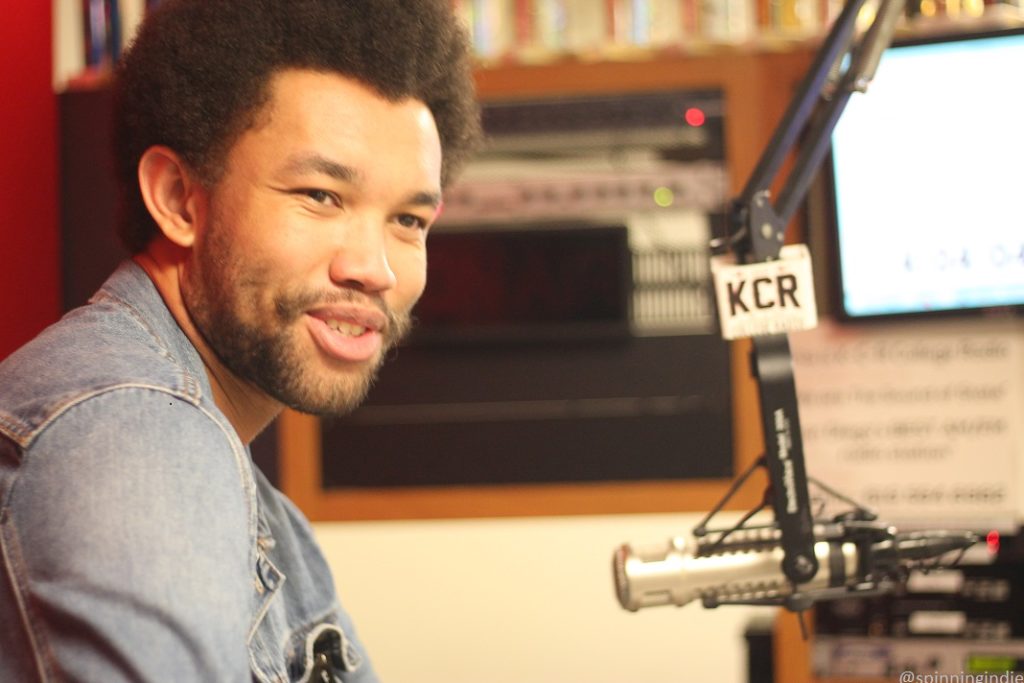
These days it’s a bit more challenging to play vinyl on KCR, although some DJs bring in their own turntables to do so. The station still has an extensive vinyl collection, housed in lockers along with some older CDs.
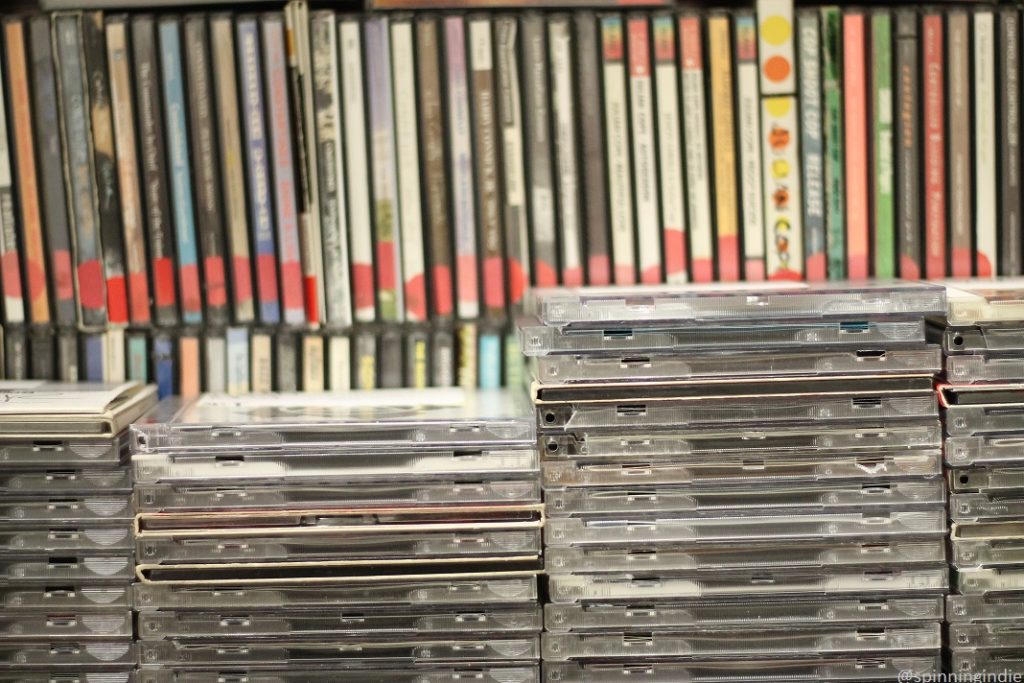
Interestingly, KCR has two distinct locations on campus- the main studio in the Communications building and an additional studio across campus. As Dixon led me to the second space, he explained that the station has been wanting to beef up its podcasting efforts and the additional production-focused studio is helping with that.
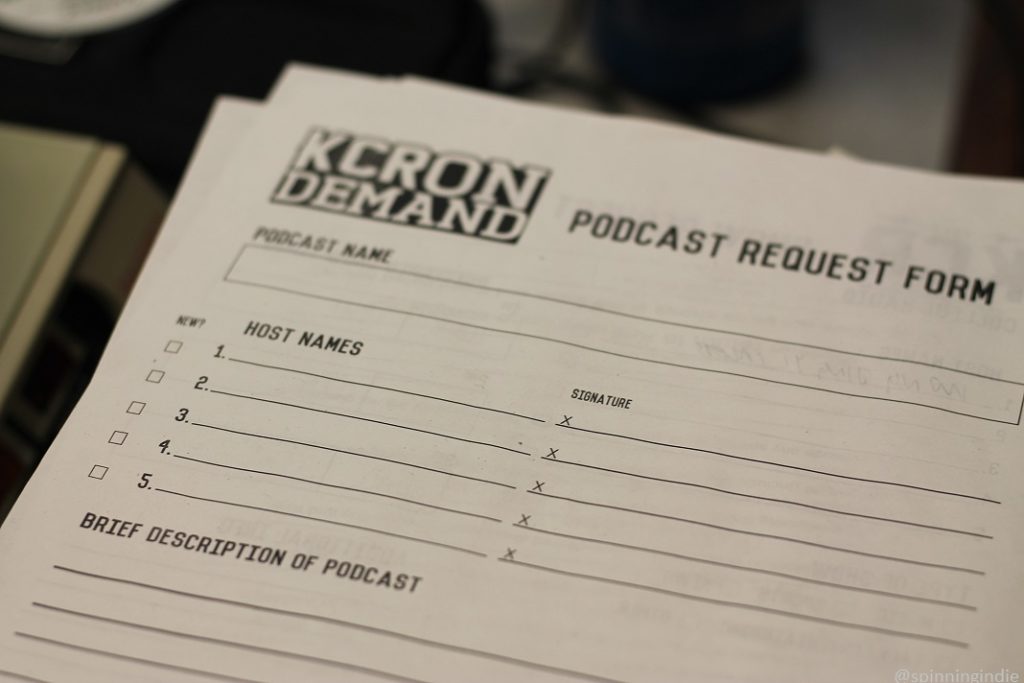
KCR was able to take over an unused Daily Aztec student newspaper office when the publication reduced its space in the building. Today, it serves as an office, hang-out space and production facility for KCR. The main room is spacious, with seating, desks, computers, filing cabinets, and lots of historical items, including photos, and old KCR publications. Behind a door is a studio stocked with audio equipment.
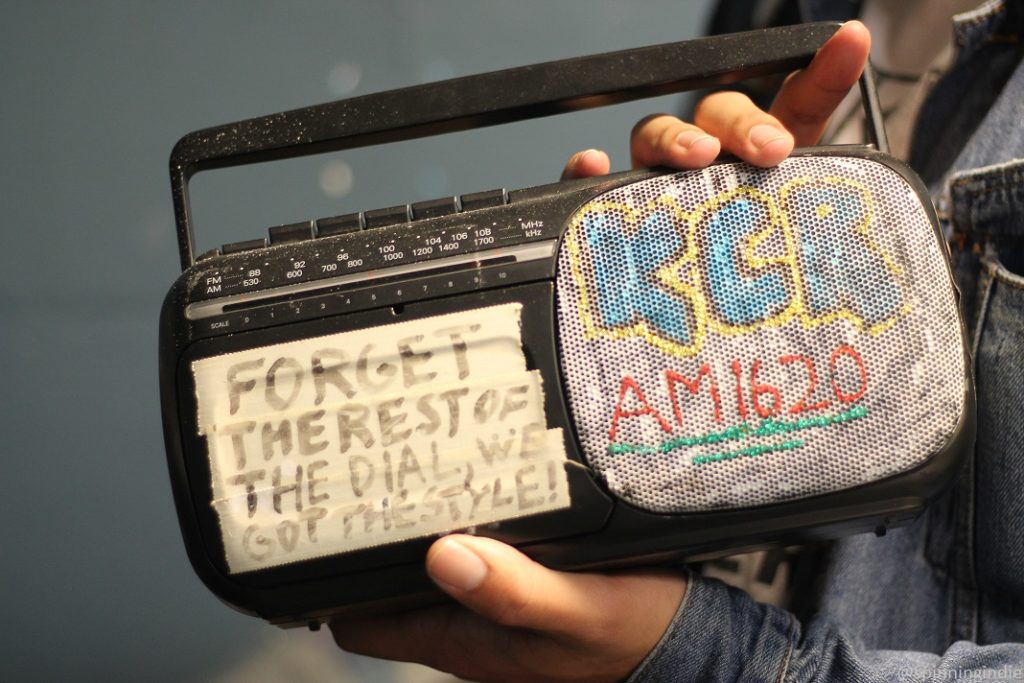
With about 150 members of KCR, the station is busy both on-air and off-air, with radio shows, an active blog, and video content. In the past it also produced a magazine called “Dead Air,” which I caught glimpses of on the station’s walls.
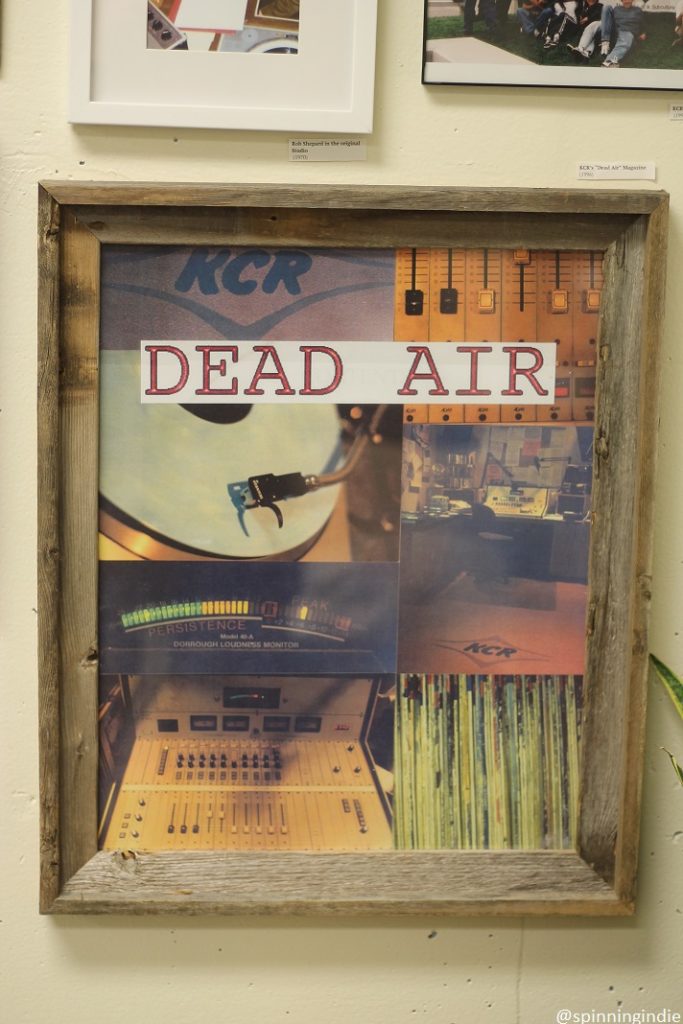
It was gratifying to see that KCR has an active alumni network documenting the station’s 50 year history. Its alumni page is full of goodies, including scans of archival photos, program guides, vintage ephemera, and audio. Alumni still grace the KCR airwaves; with one DJ, Joe Shrin, a 40+ year veteran of the station. At KCR since 1976, he’s said to be the show host who has been there the longest.
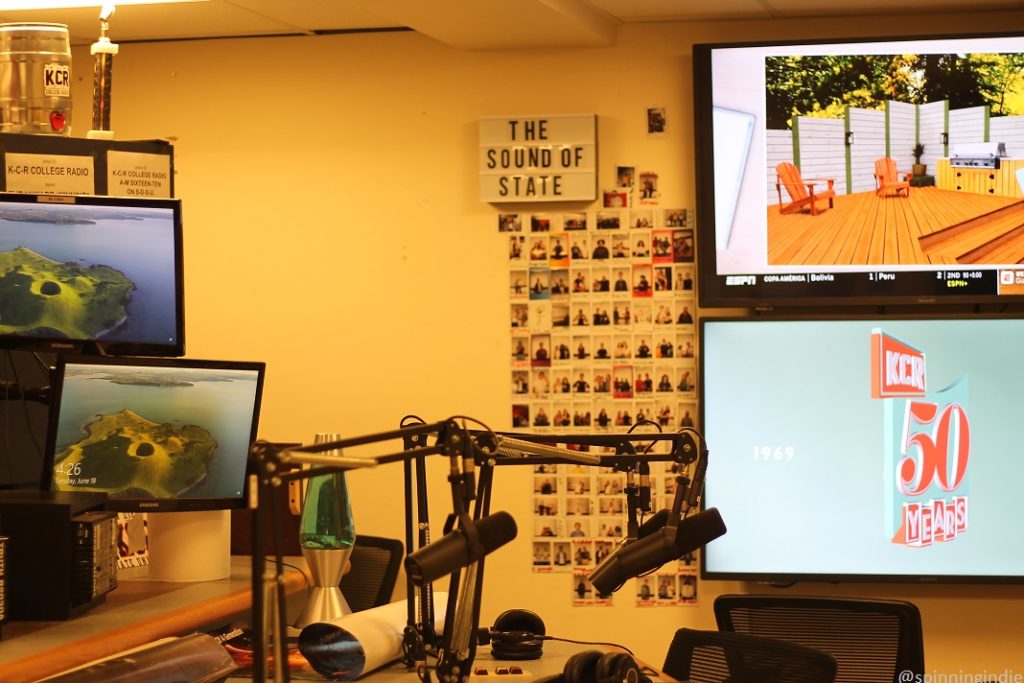
Thanks so much to Ahmad Dixon for the summer tour of KCR! This is my 160th radio station tour report and my 105th college radio station tour. Read all of my radio station visits in numerical order or by station type in our archives. I also share tidbits about my San Diego-area college radio travels on Radio Survivor Podcast #202.

